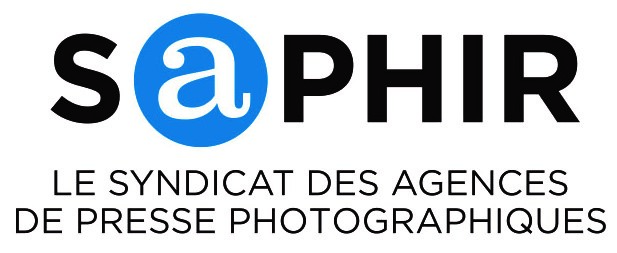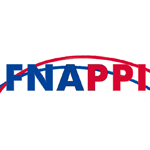Stakeholder Dialogue Meetings on the implementation of Art.17 of the Copyright directive in the Digital Single Market
Position Paper
27/02/2020
This position paper was submitted to the European Commission in the context of its Stakeholder Dialogue on the implementation of Article 17of the Copyright directive in the Digital Single Market and the “guidelines ” that are being drafted by the European Commission.
CEPIC represents hundreds of Picture Libraries and Agencies representing hundreds of thousands of photographers whose core business is the direct licensing of visual content. CEPIC members are continuously supporting the development of innovative technolog ical solutions and have developed so phisticated digital platforms to market digital content online and provide online access to images . CEPIC has been a member of the International Press and Telecommunication Council (IPTC) since 2005 and
is a founding member of its Photo Metadata Working Group.
We are under the impression that, due to the very large amount of visual content present in the online environment and more particularly in the OCSSPs, photography seems to raise a challenge for several stakeholder s, namely OCSSPs or consumer group s, when it comes to identification and remuneration. We are therefore writing to explain how this challenge may be met, using a combination of existing visual recognition technology (VRT) and collective management. This combination can work well if a number of conditions is met. The fulfilment of these conditions should be part of the “Best Practices” established by the European Commission.
Furthermore, we would like to robustly stress how the alleged challenge of clearing rights should not be used as a pretext to discriminate against a creative sector or avoid fragmentation in the remuneration of rightsholders and authors within and between Member States of the European Union, where gaps are even wider. There is absolutely no justification for a company like YouTube to exclude an entire sector from their realm of responsibility simply because t hey have a specific business model and model and they state that they state that images are not part of it. It is not difficult to see images are not part of it. It is not difficult to see how such a reading could be stretched to discriminate against any kind of how such a reading could be stretched to discriminate against any kind of content, content, conditioningconditioning liability for copyright infringement to the choice liability for copyright infringement to the choice of a of a business model. business model. The Directive must be respected by OCSSP’s and they should not be allowed to set an implementation “a la carte” to fit their should not be allowed to set an implementation “a la carte” to fit their needs.needs.
Last but not least, guidelines implementing Art.17 should enforce Best Practices Practices in in aa harmonized harmonized way all across the European Union in order to way all across the European Union in order to prevent a fragmentation prevent a fragmentation inin the remuneration between Member States.the remuneration between Member States.
- The use of technological tools is possible to clear image rights in a fairly reliable way
Technology is available and largely used by several providers in the market, this includes several EU start-ups. Videntifier made a presentation at one the Stakeholder Dialogue meetings. Image recognition services are widely used by CEPIC affiliate members. There are regular newcomers on the market, many of them are European start-ups.
The “Mochon Report”1 published by the French government in November 2019 provides a good overview of existing technological possibilities for the visual sector. The Report also points out that most online platforms do not use these technologies, so that implementation and costs are all left to the rights holders2.
Therefore, the use of VRT by OCSSPs represents a real opportunity for the visual sector. Image rights holders presently suffer of the double penalty of, on the one hand, having to cope with an extremely high rate of copyright infringement online, downgrading the value of visual content, while, on the other hand, having to bear the cost of technology to stop this abuse (3).
Thanks to Art. 17, technology used downstream to track copyright infringement could now be used up-stream to identify copyrights holders in a transparent and precise way, provided that a number of conditions are fulfilled. These “Best Practices” are:
- Costs – The cost of technology to create a transactional VRT licensing system should be funded by the OCSSPs as part of the required “best efforts in accordance with high Industry standards of professional diligence”. This obligation comes from the liability of the OCSSPs for copyrighted content. The OCSSP may choose to develop their own tools, such as YouTube’s Content ID or Facebook Rights Manager. However, it is more likely that they will be using third-party technology in collaboration with our members. This is the preferred option of our members, as this will allow them to keep control of their content rather than depend on the information of the OCSSP. In such a scenario, the license agreement between rights holders and platform could be negotiated in such a way as to integrate the costs of technology.
- In the scenario involving the use of third-party VRT, it is essential that OCSSPs provide access to their platform to enable vision recognition matching. Presently, VRT operating downstream work at the surface of the platforms. Reliable information on usage, such as number of views and sharing, breakdown by country, necessitate having access to the accounts protected by passwords. This information should be provided on an asset by asset (in this case images) basis to ensure that license fees are allocated fairly.
- Information provided by the rightsholder to the In the absence of a common identifier for image works, the thumbnail, hash, or fingerprint of the image, together with relevant image metadata may be used.
- In both cases, it is essential that the preservation of the metadata be made as a Best Practice requirement to platforms.
- Best Practice Licensing
CEPIC represents a variety of players, of all sizes and different business models. A ‘best practice’ licensing system should accommodate market fluidity while providing the greatest possible degree of legal certainty for licensors and licensees while creating a transparent competitive environment driven by market value. Direct licensing between OCSSPs and picture agencies, or independent third-party image aggregators, can easily coexist with collective management licensing. It is crucial to recognise this as many in the image industry are not members of any collective management organisation (CMO).
Although the majority of our members favour direct licensing, some may consider a collective licensing scheme as a useful option, but only if it genuinely includes the involvement of picture agencies (including image libraries, archives, and non-members of CMOs) in any implementation agreement involving CMOs across the European Union, in order to prevent a fragmentation in the remuneration between Member States, and to avert prohibitive terms on picture agencies that have contractual rights to claim rights revenue.
We are aware of different national collective management practices which are preventing CEPIC members (picture agencies and photographers), along the value chain, from claiming their rightful remuneration in certain EU Member States. This fragmentation in remuneration between Member States is creating a discriminatory treatment which affects the capacity of all our members to fairly compete in the EU Digital Market.
We fear that the use of extended collective licensing (ECL), as now provided by Art.12 of the EU Copyright in the DSM Directive, can exacerbate this situation.
We therefore urge the European Commission to ensure that any implementation of the Directive shall not result in any discriminatory treatment and fragmentation in the remuneration between Member States and provide clear guidelines to reach this objective:
- Rights holders in the value chain: OCSSPs must accept that rights holders in the value chain, which includes picture libraries, agencies and archives, have a right to issue licenses. Whilst our members would primarily advocate direct licensing model agreements for images with OCSSPs, if there is an imprimatur for CMO licensing to cover rightsholders within their repertoire – such as those that represent visual artworks featured in photographs – then CMOs should allocate rights revenue to the entire value chain within the visual sector in an open, transparent and precise way, and not discriminate against certain types of image rights holders from claiming.
- The use of VRT for identification as Best Practice: We would stipulate that all parties (OCSSPs, CMOs, picture libraries & agencies and third party aggregators) should be required to use VRT. This is the only way to ensure a proper identification of the rights holders and allocation of the revenues. Any other system, such as a flat fee, on the pretext of an alleged difficulty of clearing rights due to the lack of a common identifier for example, would be untransparent, unfair, will lead to conflicts between the collective management organisation and their members. i.e. would create a new “Value Gap”.
In a nutshell, CEPIC and their members see the use of visual recognition tools as key to bridging the value gap in the present eco-system and prevent the creation of a new one. Nevertheless, recommendations should be written in an open way to allow for technological innovation and various forms of licensing.
CEPIC represents hundreds of Picture Libraries and Agencies representing hundreds of thousands of photographers whose core business is the direct licensing of visual content off-line and online. Acting as right holders, Picture Libraries and Agencies license digital asset for all kinds of commercial uses, to newspapers, magazines, advertising, broadcasters, etc. CEPIC members are continuously adaptive towards innovative technology solutions for the growth in digital enterprises and have developed sophisticated digital platforms to both market digital content online and provide digital access to images. Amongst CEPIC members are global players such as Getty Images, Magnum Photos, and Alamy, fine arts libraries such the Bridgeman Images, historical archives such as Roger-Viollet and Fratelli Alinari, news photo syndication such as Le Figaro, news agencies such as Belga, TT or DPA as well as representatives for European trade associations AEAPAF, BAPLA, BLF, BVPA, PAJ, SAB, SAPHIR and SNAPIG.
CEPIC has been a member of the International Press and Telecommunication Council (IPTC) since 2005 and is a founding member of its Photo Metadata Working Group
Stakeholder Dialogue Art17 Position Paper CEPIC
















